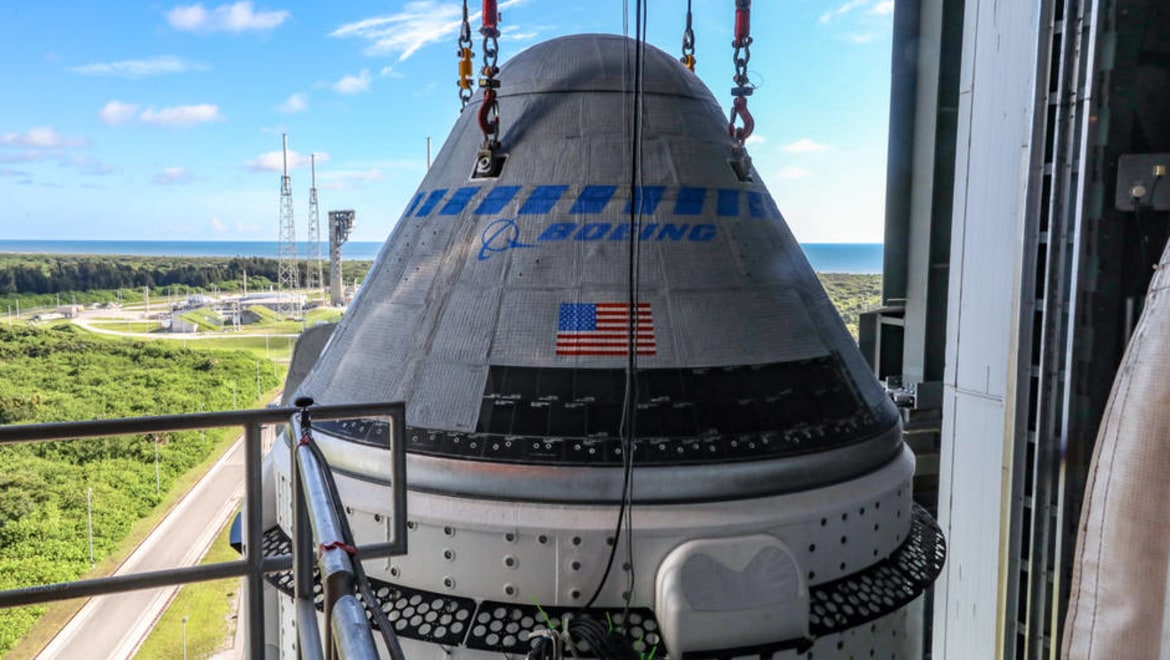
A few hours after the new module, Nauka, docked onto the ISS, its jet thrusters began firing unexpectedly, which caused the station to alter in its position in orbit.
The Boeing capsule, dubbed as CST-100 Starliner, part of NASA’s Commercial Crew Program was set to launch on 30 July, but the recent malfunction of Russia’s module caused NASA and Boeing to delay to launch.
For the time being, the Boeing capsule will be left on the launch pad as NASA administrator, Kathy Lueders, wanted to “assess the situation” before rebooting.
The mission will now launch on 3 August, and will launch from the Space Launch Complex-41 at the Cape Canaveral Space Force Station in Florida to carry 180 kilograms of cargo to the ISS.
The mission is part of NASA’s Commercial Crew Program and will test the spacecraft un-crewed, certifying its system before astronauts will board it.
“The mission will test the end-to-end capabilities of Starliner from launch to docking, atmospheric re-entry, and a desert landing in the western United States,” said NASA.
“OFT-2 will provide valuable data that will help NASA certify Boeing’s crew transportation system to carry astronauts to and from the space station.”
The mission will mark a milestone in returning American astronauts to space, in US-made spacecraft.
Boeing’s first Orbital Flight test of the Starliner spacecraft was affected by software issues in 2019, leading to the second test flight.
No crew will be on board, but the commander seat will be occupied by Rosie the Rocketeer, Boeing’s anthropometric test device
Rosie is fitted with 15 sensors to collect data on what astronauts will experience during flight.
The Nauka module, which will serve as a multipurpose research lab, storage unit, and airlock on the ISS, was launched by Russia’s space agency Roscosmos last week from Kazakhstan's Baikonur Cosmodrome.
Since the launch, the module experienced a number of glitches that saw the space community worried the Nauka might run into some trouble in its attempt to dock onto the ISS.
According to Roscosmos, the docking event of Nauka to the ISS went without a hitch, however within hours, astronauts aboard the space station informed mission control in Moscow that Nauka’s jet thrusters began to unexpectedly fire.
The engines were quickly switched off, and malfunction did not pose any risk to the astronauts onboard, according to NASA, however the incident did push the ISS out of its standard position in space.
NASA headquarters in Houston, Texas, informed astronauts to fire engines on a module on the opposite side of the ISS in order to return the station to its original position.
Roscosmos reportedly stated that Nauka’s unplanned engine start occurred due to residual fuel in the craft, a matter which was being handled.
"The process of transferring the Nauka module from flight mode to 'docked with ISS' mode is underway. Work is being carried out on the remaining fuel in the module," Roscosmos said, according to local news media.
NASA has since confirmed that the ISS has been returned to its original orientation and operations are now “stable”, with no long term damage reported to the station.
"After its commissioning, the Russian segment will receive additional room for arranging workplaces, storing cargo and housing water and oxygen regeneration equipment," Roscosmos said.
The addition of Nauka appears to have restated Russia’s commitment to ISS, despite earlier threats that the country would withdraw from the program if the US refused to lift sanctions that were imposing on Russian satellite launches.

Isabella Richards
Bella Richards is a journalist who has written for several local newspapers, her university newspaper and a tech magazine, and completed her Bachelor of Communications (Journalism) at the University of Technology Sydney in 2020. She joined Momentum Media in 2021, and has since written breaking news stories across Space Connect, Australian Aviation and World of Aviation.
You can email Bella on: [email protected]
Receive the latest developments and updates on Australia’s space industry direct to your inbox. Subscribe today to Space Connect here.









